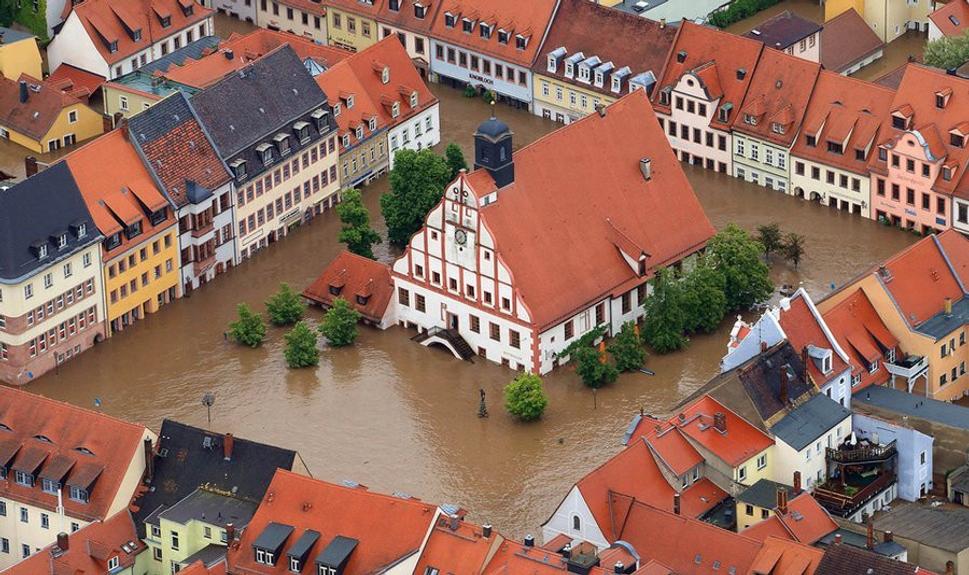
To explain the relationships, I took the liberty to use the satellite images of the Slovak Hydro-Meteorological Institute taken in three-hour intervals. The images show how the large rain cloud did not want to move off from the affected area. I note that if the rain clouds had the opportunity to spread on a territory double the size than now, nothing would have happened and the Czech Republic, Germany and Austria would not be threatened by the flood disaster.
I suggest you to notice the extensive cloudless zone in the western part of Germany, Belgium, the Netherlands and France clearly visible on the imagery. East of the rain clouds an extensive cloudless belt was slipping in. Recall that in the same time Moscow was over 25 °C, and the north of Finland reached almost 30 °C, rather unusual temperature for this area in this time.
How can it be that distorted temperatures across Europe are completely upside down in early June? How is it possible that such strong boundaries of cloudy and cloudless zone exist? Indeed, in the past it was not like that. Or was it? Certainly clouds were more stretched over the continent and when the water in the clouds condensed it poured over a larger area with less intense rainfall. Note also two frontal systems that collided over Germany and the Czech Republic - as if it were a front line between West and East in which two fronts want to win at any cost.
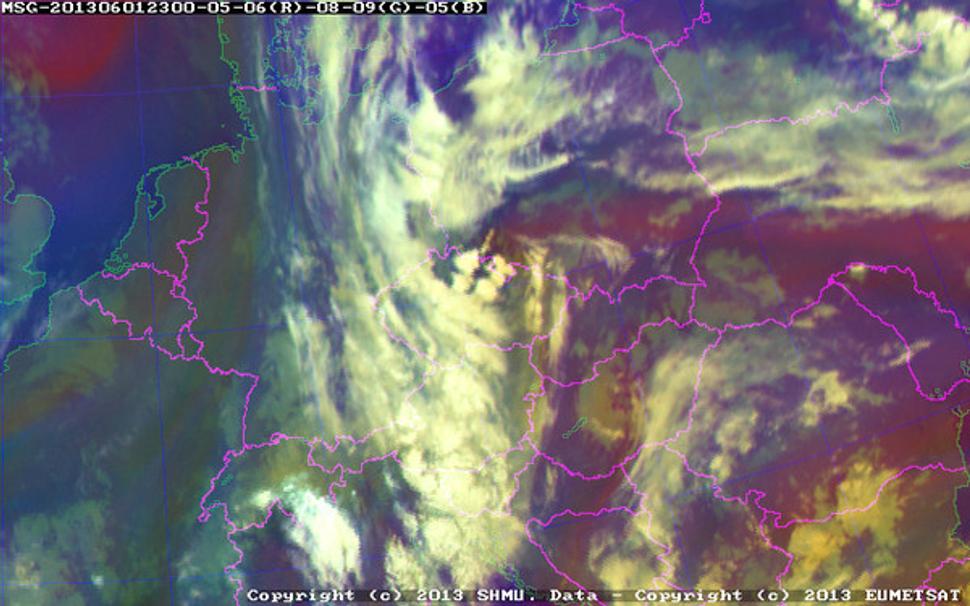
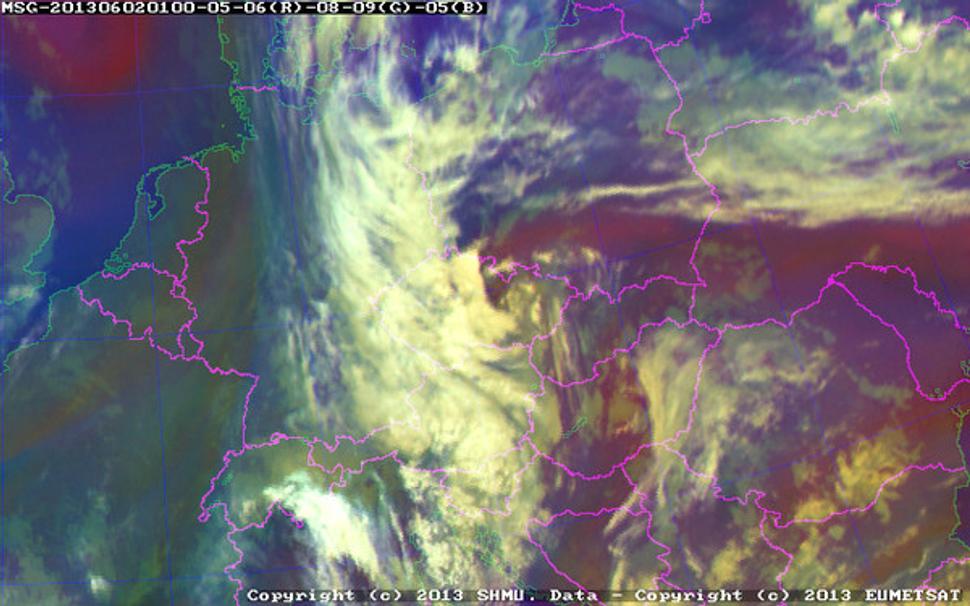
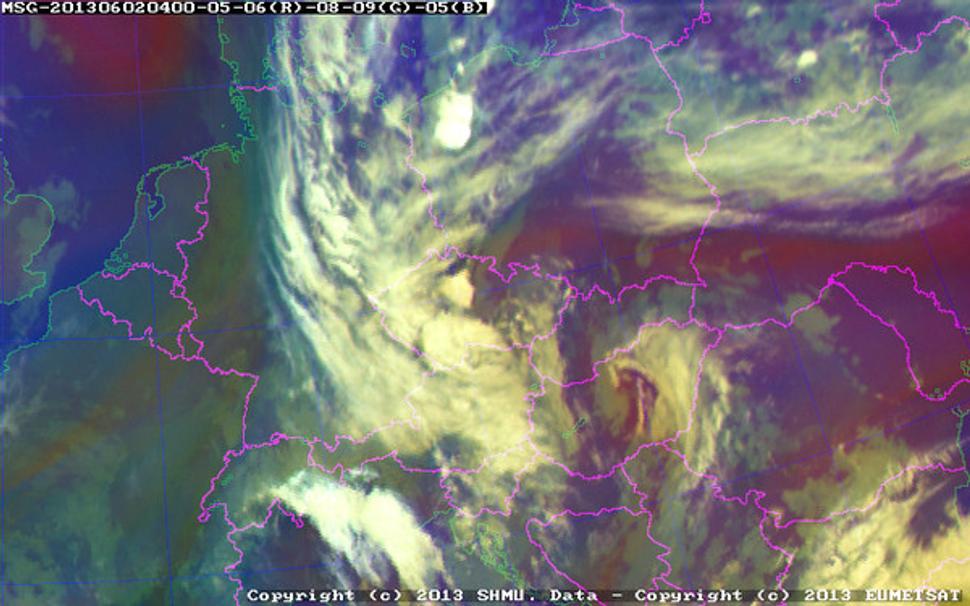
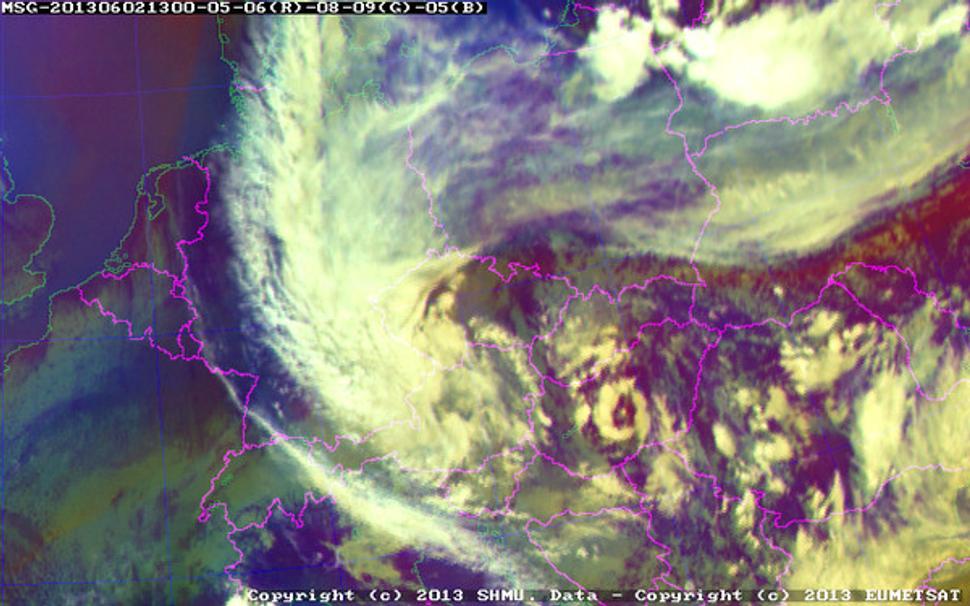
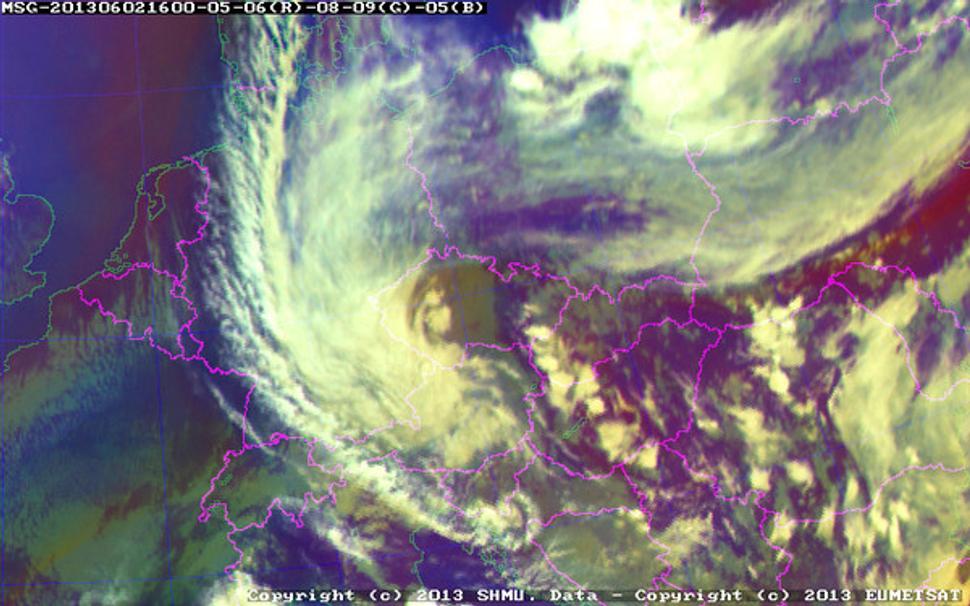
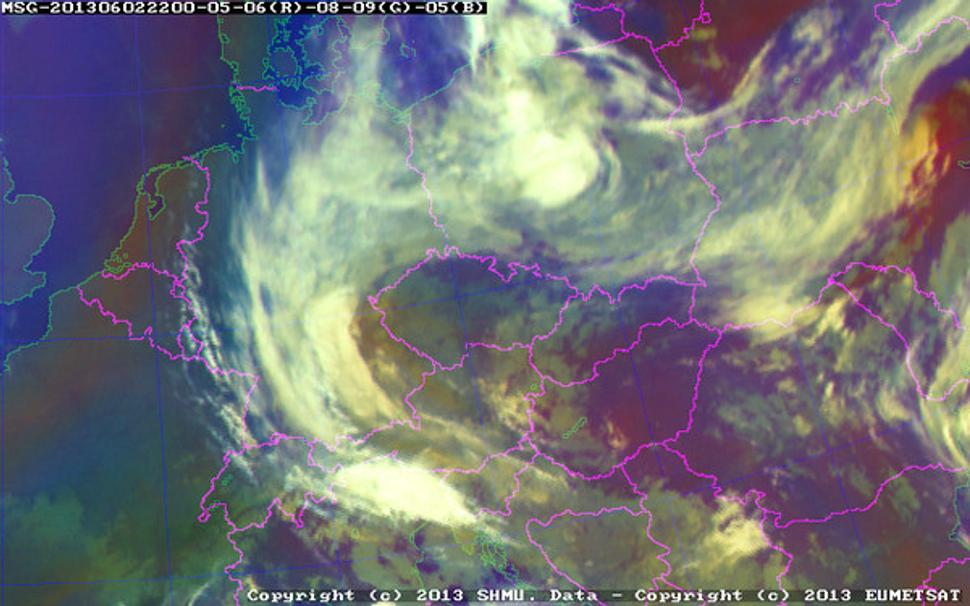
Is it possible to explain such a physical phenomenon? Explanation is offered by New water paradigm - Water for the Recovery of the climate (www.vodnaparadigma.org). According to its conclusions, if dry areas (mainly in agro-urban landscape) are increasing, less solar energy is used for evaporation of water from land to the atmosphere. This produces more sensible heat to the atmosphere. According to physics, one cubic meter of water evaporated consumes nearly 700 kWh of solar energy. If rainwater infiltration into the soil is limited, for example by draining it into the nearest stream for any reason (urbanization and industrialization of agricultural landscape), the mentioned 700 kWh is not used for water evaporation into the atmosphere, but this unused energy is transformed into sensible heat and warms-up the environment. Underestimating the role of drying of the landscapes literally produces tremendous heat, which warms the atmosphere.
This creates heat islands with higher temperature. The energy produced causes not only chaos in the atmosphere, but also troublesome situations associated with the decrease of precipitation in dry regions, unprecedented vertical cloud formation above the cooler, mountainous and mostly forest covered territories. This is a spatial change in distribution of precipitation and related temporal change in the distribution of precipitation.
If the above is true, then we have a simple tool to use. We need simply saturate the dry land wit water which will produce less heat into the atmosphere and maybe a "miracle" would happen. We will have less intense rains in the cooler mountain areas and more precipitation in those which are drying out. This is beneficial both for those who live in hilly and forested territories, as well as for those living in lowland areas, dried-up mainly due to agriculture and urbanization of the landscape.
Paradoxically, large urban areas, such as Prague, contribute significantly to dramatic torrential rains which are currently threatening the very same city by flood. Why? For example, because from the territory of Prague and all its satellites about 70 million cubic meters of water is canalized annually, and the excess heat from Prague contributes to heating of the atmosphere in the Czech basin. The process of drying-up of land and decreasing water storage in the Czech territory exceeds 500 million cubic meters per year, thereby the annual contribution to the heating of the air is increasing by about 350 000 GWh, which is about a 5 year energy production of Czech power plants.
Drying of the landscape goes on in France, Germany, Holland and Belgium and throughout southern Europe. Of course, Eastern countries are also involved in this process. Another paradox is that culture of European legislation is based on sector principle, which implies that parts of the environment are protected entirely and other parts can be completely transformed. Result of this legislation is simply a conflict of two energies in the atmosphere (latent and sensible heat), creating storms and other dangerous phenomena in the atmosphere, like over the North American continent.
It is therefore highest time to stop large scale drying of Europe. If we do not do it now, the forces of the elements, which we actually empower by sending more and more energy into the atmosphere, will not have mercy with us. If it starts now, within ten years, we can solve or reduce problems of extreme floods, droughts and natural disasters, as we know them today. Otherwise, we can await new extreme weather events on our continent with extent we can not imagine today.






